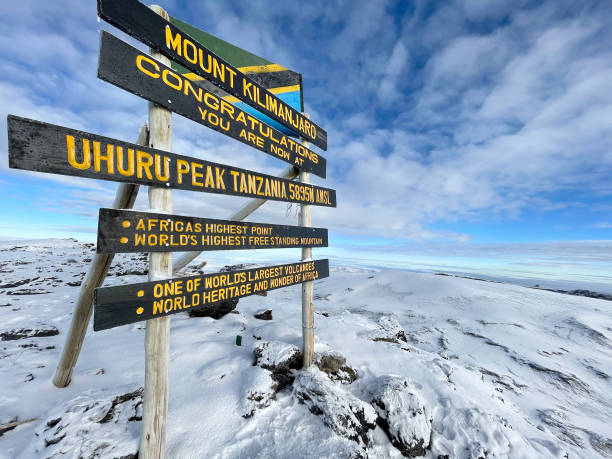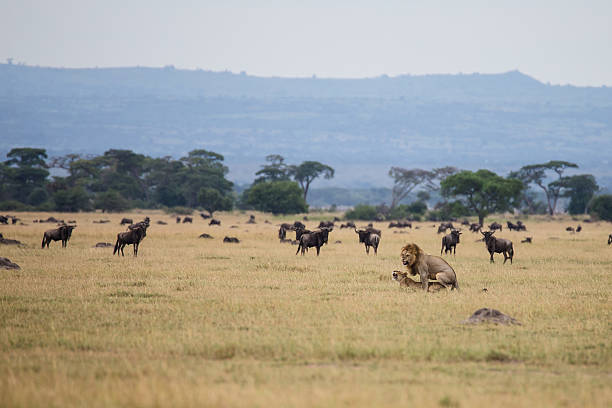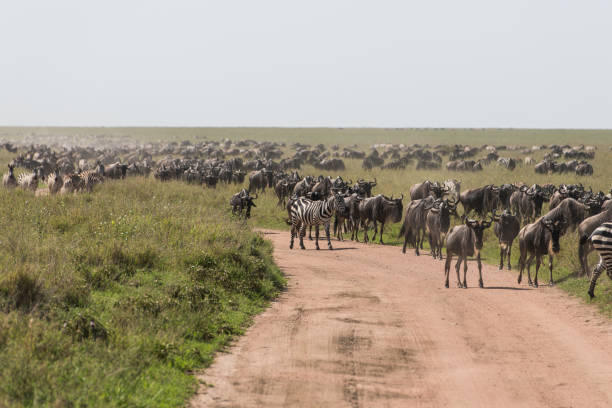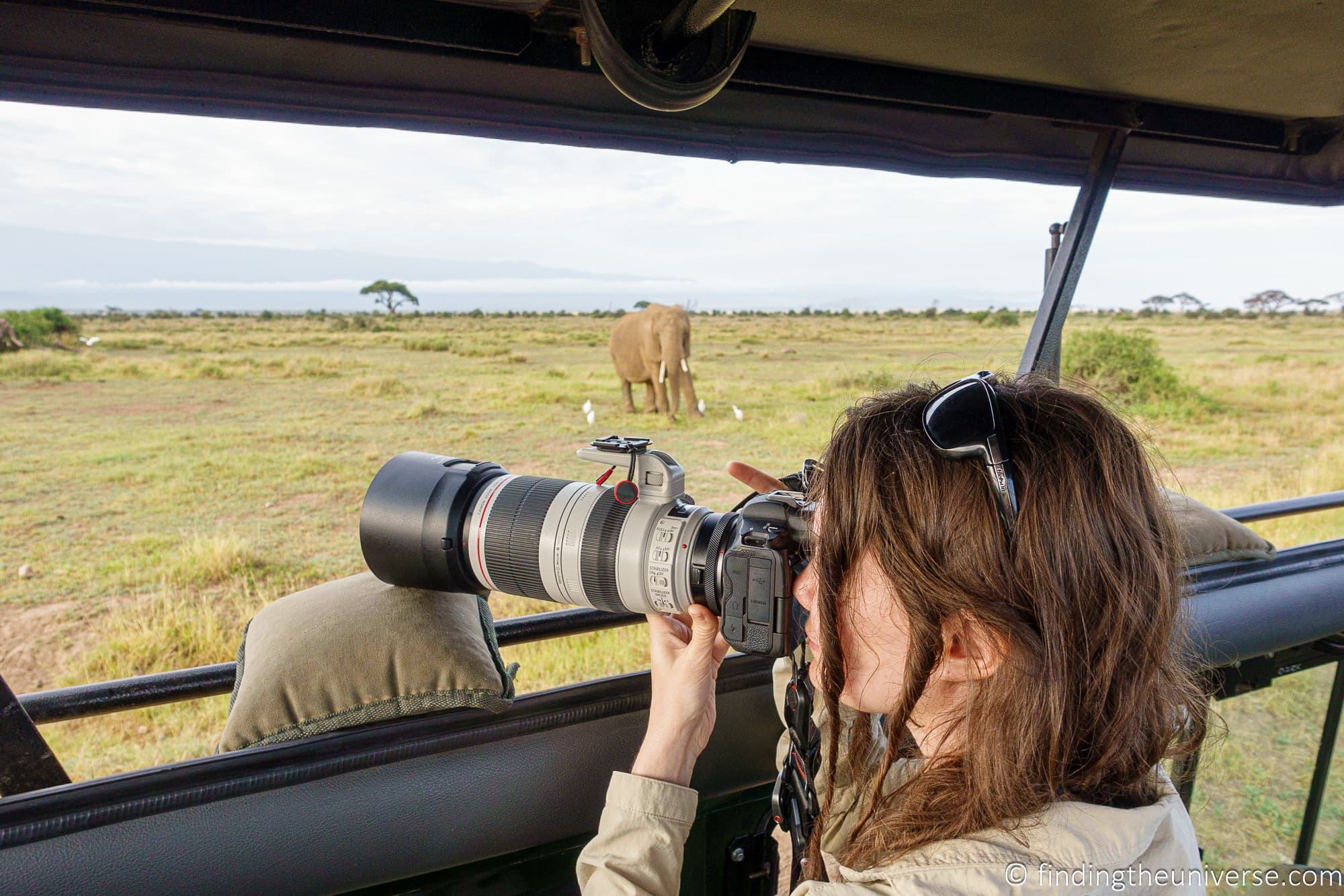Witness the Africa Wildebeest Migration
The Africa Wildebeest Migration is one of nature's most awe-inspiring events, featuring over 1.5 million wildebeest, zebras, and other animals traversing the Serengeti and Ngorongoro in search of fresh pastures and water. This spectacular journey, often referred to as the "Great Migration," offers a unique opportunity to witness the raw beauty of nature and the circle of life in action. The migration typically begins in December and continues until September, with a circular route that starts in the southern Serengeti during the calving season, where thousands of wildebeest give birth. As the dry season approaches, the herds move northward, facing various challenges, including predators and dangerous river crossings.
1. What is the Wildebeest Migration?
The Wildebeest Migration is an annual event that takes place between Tanzania and Kenya. The animals move in search of food and water, navigating harsh weather and predators along the way. The migration covers approximately 1,800 miles (2,900 km) and is a crucial survival mechanism that helps maintain the ecological balance of the region by rejuvenating the grasslands.
2. Why Does the Great Migration Occur?
The Great Migration occurs primarily due to the animals' instinctual need to find food and water. The seasonal rains influence the availability of grasslands, prompting the herds to move to greener pastures. The migration cycle is also driven by:
- Water Availability: As the dry season progresses, water sources diminish, forcing the herds to migrate toward areas with more abundant water supplies.
- Calving Season: The migration begins with the calving season in the southern Serengeti from late January to early March, where the herds give birth to thousands of calves. This timing ensures that the young are born when food is plentiful.
- Predator Pressure: As the herds move, they also face predators such as lions and crocodiles. The migration helps to balance predator-prey dynamics in the ecosystem.
- Ecological Balance: The movement of these large herds plays a critical role in maintaining the ecological balance, as their grazing patterns help promote new growth in grasslands.
3. Best Time to Experience the Migration
The best time to witness the migration is from June to September when the wildebeest cross the Mara River and head into Kenya. However, the migration is a year-round event, and different locations offer unique experiences at various times of the year.
4. Why Choose Ngaiza Adventures?
With Ngaiza Adventures, you'll enjoy a guided experience led by knowledgeable professionals who understand the migration patterns and the best viewing spots. Our tours provide you with the opportunity to witness this natural spectacle up close while ensuring your comfort and safety.
- Expert guides with extensive knowledge of the migration.
- Customizable safari packages to fit your preferences.
- Comfortable accommodations and transportation options.
- Guaranteed wildlife viewing experiences.
5. What to Expect on Your Safari
Your safari with Ngaiza Adventures will be a blend of adventure and comfort. Expect:
- Morning and evening game drives to maximize wildlife sightings.
- Opportunities to observe other wildlife species in their natural habitats.
- Luxurious lodges or tented camps that offer comfort after a day of exploration.
- Delicious meals featuring local cuisine.
The Wildebeest Migration is not only a survival mechanism for these animals; it also plays a crucial role in maintaining the ecological balance of the region. As the herds graze, they help to rejuvenate the grasslands, promoting new growth and ensuring a healthy ecosystem. Additionally, this migration attracts a diverse array of wildlife, including predators, scavengers, and various bird species, making it a unique and dynamic spectacle in the African savanna.
Key Facts about the Wildebeest Migration:
- Distance: The migration covers approximately 1,800 miles (2,900 km) in a circular route.
- Participants: The migration primarily involves wildebeest, but zebras and gazelles also join the journey.
- River Crossings: Dramatic river crossings occur, where thousands leap into the rivers, facing numerous dangers.
- Timing: While the migration occurs year-round, the best time to witness the river crossings is typically from June to September.
- Calving Season: The calving season occurs between late January and early March in the southern Serengeti.
Witnessing the Wildebeest Migration is often described as a once-in-a-lifetime experience, offering an unparalleled opportunity to observe the raw beauty of nature and the incredible survival instincts of these magnificent animals.





